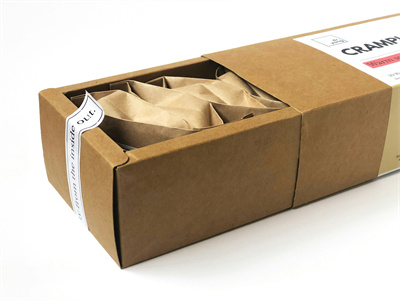Contact Us

Contact Us


Guangzhou Huaisheng Packaging Co.,Ltd.
We provide customers with quality products and provide high-quality services.
If you would like to leave us a comment please go to contact us
+86-18122240089

In today’s competitive market, packaging plays a crucial role in creating lasting impressions. Whether you're a small business owner, an entrepreneur, or simply looking for a personalized way to package your gifts, custom boxes are a great way to elevate the experience. However, the cost of custom packaging can add up quickly. Fortunately, you can create affordable, high-quality custom boxes without breaking the bank.
This guide will take you through the process of designing and making custom boxes on a budget. We’ll cover cost-effective materials, design ideas, and practical tips to help you achieve a professional look while keeping your expenses low.

Before jumping into the specifics of budget-friendly custom box creation, it’s important to understand the essential components of a custom box:
A custom box is a made-to-order packaging solution tailored to fit a particular product or purpose. The design, size, shape, material, and finish are customized to suit the item being packaged, offering a personalized and professional presentation.
Custom boxes not only provide protection for your products but also act as a branding tool. They enhance customer experience, build brand recognition, and differentiate your products from competitors.
The choice of material is one of the most significant factors influencing both the cost and functionality of your custom box. While premium materials can be expensive, there are several cost-effective alternatives that still offer a high-quality look.
Cardboard is one of the most budget-friendly materials used in packaging. It’s sturdy enough to protect most products and can be easily printed or laminated to achieve a professional appearance.
Kraft paper is a popular choice for eco-friendly packaging. It offers a rustic, natural appearance and is biodegradable, which can appeal to environmentally conscious consumers.
Corrugated fiberboard is often used for shipping boxes due to its durability. While slightly more expensive than cardboard, it still provides a budget-friendly solution for protective packaging.
For those seeking a sustainable option, recycled paperboard is an affordable choice that also promotes eco-conscious values.

Creating your custom box doesn’t have to involve expensive tools or software. With a few simple techniques and creative ideas, you can design a box that stands out without spending a fortune.
There are several free online design tools that allow you to create professional-looking packaging designs without a steep learning curve or cost. Platforms like Canva, GIMP, and Inkscape offer easy-to-use interfaces and plenty of design templates.
Instead of opting for expensive printing techniques like foil stamping or embossing, consider using simpler methods like rubber stamping or screen printing. These methods are affordable, and they can still produce impressive results.
If you’re looking for an affordable way to add branding to your custom boxes, custom labels and stickers are an excellent option. You can print them yourself or order them in bulk from an online supplier.
For smaller runs or one-off projects, consider creating handcrafted custom boxes. You can repurpose existing boxes and add your own personal touches such as hand-drawn illustrations, calligraphy, or decorative elements.
Creating custom boxes involves several key steps. Follow these steps to ensure that you’re maximizing your budget while achieving a professional finish.
Select a material based on your product’s needs and your budget. Cardboard and kraft paper are often the most affordable options, but consider durability and aesthetic appeal.
Accurate measurements are essential for creating a custom box that fits your product perfectly. Take precise measurements of the height, width, and depth of your item to ensure the box is the right size.
Use free online design tools to create your custom box design. Incorporate your brand’s logo, colors, and any important information. Keep the design simple to reduce costs but make sure it aligns with your brand identity.
Once you have your design, print it onto your chosen material and cut out the box. If you don’t have access to industrial cutting equipment, you can use a craft knife and a ruler for more precise cuts. Assemble the box by folding the edges and securing with glue or tape.
To make your box truly unique, add branding elements such as custom labels, stickers, or stamps. You can also use ribbons or other decorative touches to give the box a polished look.
Ordering materials or pre-made boxes in bulk can save you a significant amount of money. Many suppliers offer discounts for large orders, so even if you’re a small business, purchasing in bulk can still be a cost-effective option.
The more intricate the design, the higher the cost. To keep things affordable, opt for simple yet effective designs. Focus on minimalistic graphics and clear typography for maximum impact.
If you’re creating boxes for small quantities or limited-edition items, consider doing the work yourself. While it might be time-consuming, it can be a fun and budget-friendly way to create custom packaging.
Yes, you can. All you need is basic crafting tools like a craft knife, ruler, and adhesive. Many DIY box makers use free online design tools and simple cutting techniques.
The cost of custom boxes depends on the material, design complexity, and quantity ordered. For small runs, you can create affordable custom boxes for under $1 per unit.
Choose recyclable materials like kraft paper, recycled paperboard, or biodegradable options. You can also reduce waste by minimizing packaging design complexity.
Creating custom boxes on a low budget is entirely possible with the right approach and materials. By using affordable materials, simple design techniques, and DIY strategies, you can create professional packaging that enhances your brand and impresses your customers, all without exceeding your budget. Start small, experiment with different materials, and make your packaging a key part of your product’s appeal.
